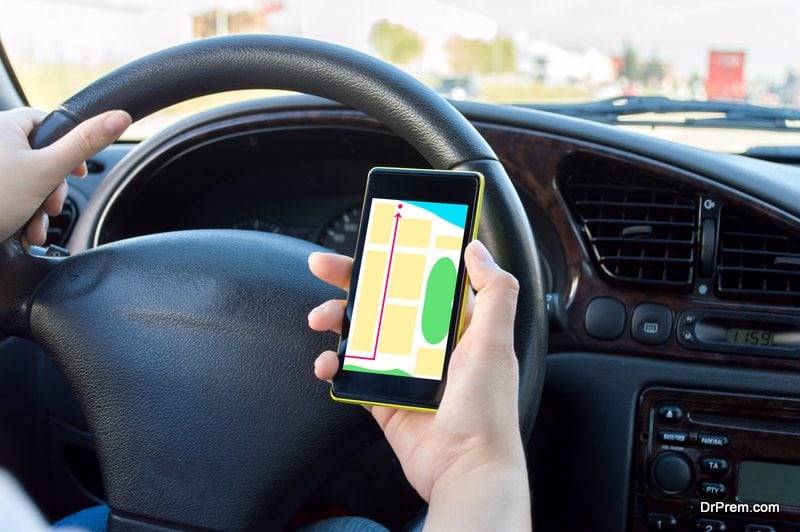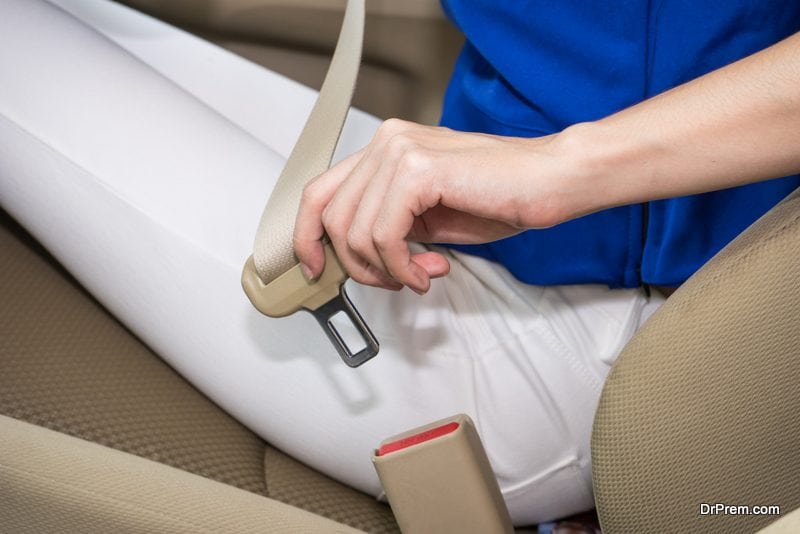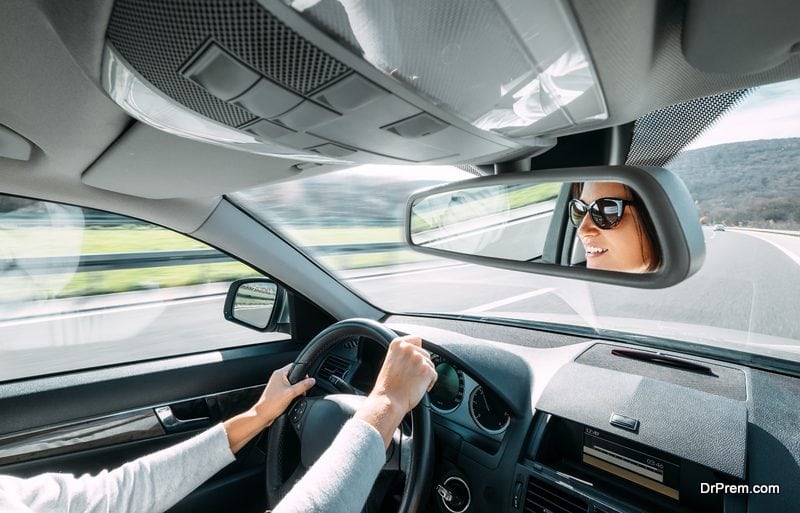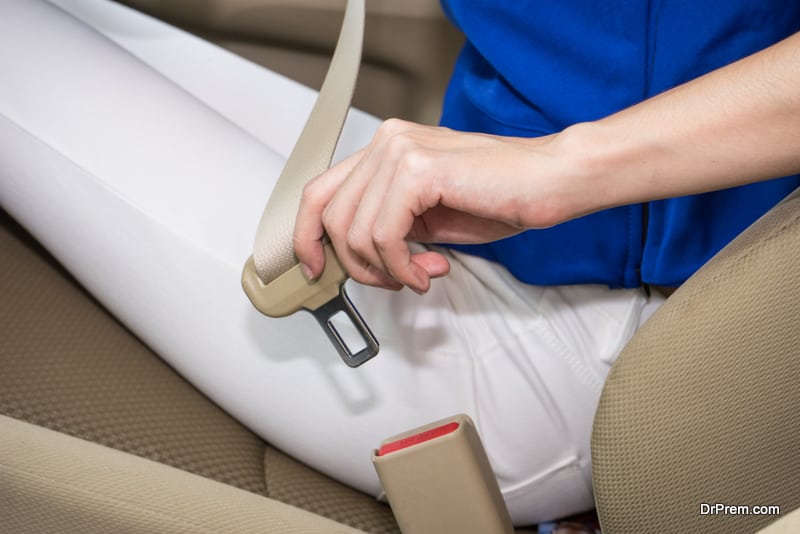With over 1.3 million people dying each year in automobile accidents, road safety is a big concern. Sometimes, accidents are out of your control while other times, just a few small adjustments in your behavior and driving practices can mean the difference between life and death. Here are a few ways to remain safe, healthy, and alive while driving.
Don’t Use Your Phone

This is another law enforced in most states. Texting while driving, as well as talking on your cell phone are punishable offenses. And for good reason. Distracted drivers make dangerous drivers. When you’re behind the wheel of a moving vehicle, your attention should be solely on driving. You need to be aware of yourself and other motorists, as well as changing road conditions, construction or school zones, and unexpected incidents. When people text and drive, they’re taking their eyes off the road. This can lead to rear ending the car in front of them or drifting off course. The same holds true for talking on your cell phone while driving. If you’re using your phone for directions or navigation, invest in a GPS or a car that comes with a navigation system. This way, your attention is on the road instead of on your phone.
Don’t Drink and Drive
Drinking and driving is also a punishable offence in all states and can result in jail time and loss of license. Drunk drivers are not only putting themselves at risk but everyone else on the road as well. If using your phone while driving makes you impaired, driving while drunk is much worse. When a person is under the influence of drugs or alcohol, it delays your reaction time, causes drowsiness, blurred vision, and impaired judgment, just to name a few. It’s never a good idea to get behind the wheel after consuming alcohol. If you plan to go out and drink, either choose a designated, sober driver or call an Uber or other car service to pick you up. It’s not worth taking the risk that you either get pulled over or cause a serious, life-threatening or life-ending accident.
Wear Your Seatbelt

This is one of the most basic ways to remain safe while driving. Wearing your seatbelt is a law in most states, except New Hampshire. Seatbelts prevent fatalities in front seat passengers by up to 50%. Although seatbelts can sometimes cause other serious injuries to your neck, chest, ribs, and back, without one, passengers are at risk of being ejected from the vehicle during an accident. Small children are required to sit in the back of the car and use a carseat appropriate for their age, weight, and height. This ensures that the safety harness fits them securely and properly. Be sure the car seat is installed correctly in the car.
Be Aware of Your Surroundings
This is why distracted driving is dangerous driving. Your full attention needs to be on the road. And not just the road in front of you. Vehicles are equipped with side and rearview mirrors for a reason. This allows you to see what’s happening behind and next to you. Be sure to check your mirrors before making any lane changes and use your signal before doing so. If you’re feeling tired, pull over and take a rest. Drowsy drivers are just as dangerous on the road as drunk ones. Pay attention to the flow of traffic in front of you. A vehicle’s brake lights will indicate that traffic is slowing down and you may need to make a sudden stop. Try not to wear headphones while driving or have your music turned up too loud. This may prevent you from hearing someone beeping their horn, sirens approaching from behind or other important sounds and signals that you need to either stop, move or change your driving pattern.
Practice Caution During Bad Weather
 Rain and snow can make for some pretty treacherous driving conditions. Depending on where you live, invest in a vehicle that has either four-wheel drive or all-wheel drive. This will make it much easier to drive in snowy conditions. If the snow is increasingly bad or the weather channel has called for a blizzard or state of emergency, it’s best to stay in your house. There’s no reason to be on the road in these types of conditions unless you have a plow truck or emergency service vehicle. Heavy rains can also make for slick conditions and decreased visibility. If you find yourself caught in a heavy rainstorm, proceed with caution. If you can’t see, even with your windshield wipers at full speed, pull over. Take a break safely on the shoulder with your hazard lights on until the storm passes. You may also see drivers riding in the slow, right lane, with their hazards on during a heavy rainstorm. This is another option if you don’t want to stop driving completely.
Rain and snow can make for some pretty treacherous driving conditions. Depending on where you live, invest in a vehicle that has either four-wheel drive or all-wheel drive. This will make it much easier to drive in snowy conditions. If the snow is increasingly bad or the weather channel has called for a blizzard or state of emergency, it’s best to stay in your house. There’s no reason to be on the road in these types of conditions unless you have a plow truck or emergency service vehicle. Heavy rains can also make for slick conditions and decreased visibility. If you find yourself caught in a heavy rainstorm, proceed with caution. If you can’t see, even with your windshield wipers at full speed, pull over. Take a break safely on the shoulder with your hazard lights on until the storm passes. You may also see drivers riding in the slow, right lane, with their hazards on during a heavy rainstorm. This is another option if you don’t want to stop driving completely.
Drive Slowly Near Schools and Construction Sites
Penalties for speeding are increased significantly in both construction and school zones. That’s because in both these areas there are pedestrians walking and working near and on the roadway. Reduced speeds are put in place so that drivers are moving more slowly, decreasing the risk of a pedestrian being struck. Small children are often unpredictable. Students sometimes run off of and in front of the school bus without looking where they’re going. As the driver, it’s your responsibility to pay attention and proceed with caution where small children are present. Construction zones are loud and chaotic at times. This means workers may not hear approaching vehicles or may move out from behind a machine or other vehicle suddenly, without warning. When driving through a construction zone, adhere to posted speed limits and proceed with caution.
Don’t Speed or Tailgate

And lastly, speed limits are created for a reason. They help control the flow of traffic and prevent accidents. It’s important that you pay close attention to the posted speed limit. Driving above the speed limit can result in a ticket or an accident. The faster you drive, the less in control of your vehicle you are. This means you have less time to react, change direction or stop in the event that you need to. Your reaction time is significantly reduced when you’re traveling at a high rate of speed. Tailgating is another dangerous practice. Driving too close to the car in front of you is an easy way to become involved in a “fender bender” where one car rear ends another. This can cause a chain reaction, with a multiple car pileup. When you’re driving too close to the car in front of you, you’re not allowing yourself enough time to react to any sudden stops or changes in their direction. You should leave at least two car lengths between you and the car in front of you.
Be Alert and Be Safe
Driving is a serious responsibility that requires all of your attention. When you’re distracted or driving recklessly, you’re not only putting yourself in danger but also all other vehicles on the road. If you’re already a safe driver, you still need to be aware of other vehicles where drivers may not be practicing safe habits. Be alert and aware of your surroundings. Always wear your seatbelt and adhere to driving rules, speed limits, and other posted signs. It will help keep everyone safe and healthy on the road.
Article Submitted By Community Writer




